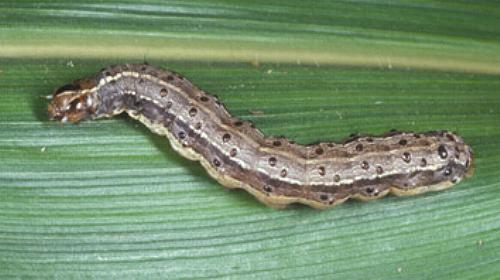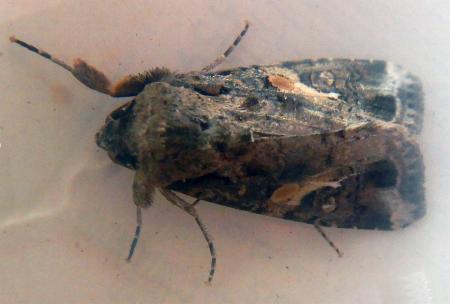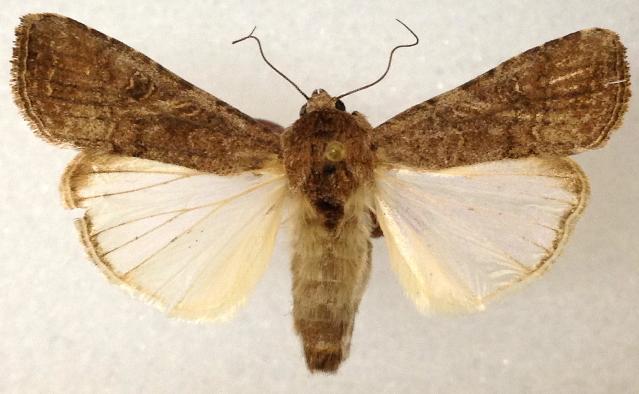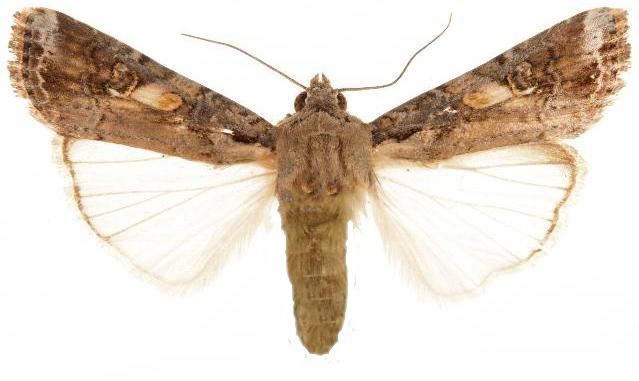
| Fall Armyworm (formerly known as Phalaena frugiperda) ACRONICTINAE, NOCTUIDAE, NOCTUOIDEA | (donherbisonevans@yahoo.com) and Stella Crossley |

(Photo: courtesy of James Castner,
University of Florida)

| Fall Armyworm (formerly known as Phalaena frugiperda) ACRONICTINAE, NOCTUIDAE, NOCTUOIDEA | (donherbisonevans@yahoo.com) and Stella Crossley |

(Photo: courtesy of James Castner,
University of Florida)
These Caterpillars are brown with pale dorsal and dorso-lateral lines, and rows of dark spots along the back and sides. The undersides are pale brown. The head is dark brown with an inverted 'V' marking.
The natural diet of these caterpillars is
but they have become an international agricultural pest on crops and pastures, feeding on the flowers, fruit, and leaves of a wide variety of plants, including
The attack of this species on crops can appear very suddenly, as the early instars require very little food, but later instars are voracious, totally destroying crops apparently ovenight.
Curiously: the caterpillars have been reported not to attack a number of crops, although there is some confusion over the exact species that they dislike, but which may include:
When food is short, the caterpillars become cannibals: attacking each other. The caterpillars grow to a length of about 4 cms. When mature: they burrow into the soil below the plant where they pupate without a cocoon.

The adult moth is brown with a complex pattern of paler marks on the forewings. The males have bolder markings than the females. The hindwings are plain pearly white with narrow dark brown edges. The moth has a wingspan of about 3 cms.

The pheromones of the species have been determined.

Attempts to control the pest include the use of:

The eggs are white, and laid in piles of about 100, and covered in hairs from the female's abdomen.
The species originated in the Americas, in
and now is found across the world in :
and has recently invaded Australia, being found, so far (July 2020), in
Further reading :
Sir James Edward Smith and John Abbott,
The Natural History of the rarer lepidopterous insects of Georgia,
T. Bensley (printers), London, Volume 2, pp. 191-192, and also
Plate 96.
 caterpillar |  butterflies |  Lepidoptera |  moths |  caterpillar |
(written 28 July 2020, updated 7 October 2020, 7 April 2022)